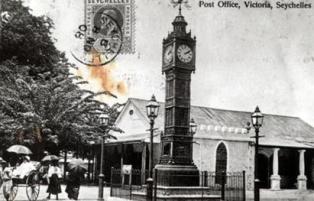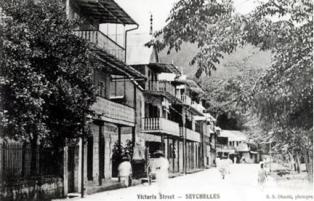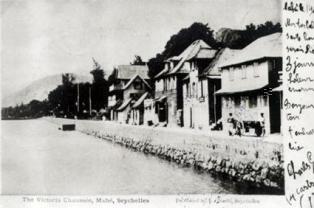The way we were…101 years ago |13 November 2010
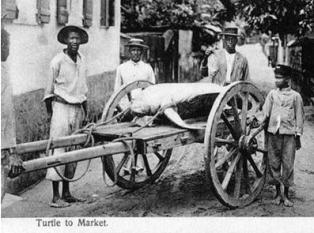
The year 1909 pulsated with the exuberance of industry and an outpouring of optimism about national prosperity.
As the first decade of the 20th century drew to a close, during which the foundations of our economic development and social evolution had been established, it heralded development goals that would form a continuous succession of events leading up to our present modern society.
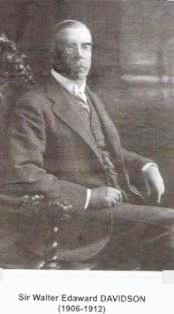
The population stood at 22,409, an increase of 427 on 1908. Praslin had 1,912 inhabitants and La Digue 1,272. Most earned their livelihood from fishing or agriculture; 500 men were employed by the Mahe Syndicated Company, which had a contract to exploit guano on outlying islands.
The economic supremacy of the coconut was such that all property owners established plantations on their land in a bid to satisfy the insatiable European demand for copra, as well as vying for the most profit from the lucrative industry.
Over 12,000 acres of land throughout the colony were under coconut cultivation. That year, millions of coconuts were harvested; the colonial reports are rigidly, meticulously and scrupulously precise.
They tell us that a total of 24,213,578 nuts at R1.25 per 100 nuts were harvested; 91,907 nuts were exported, with 28,975 going to Reunion. Millions of nuts were converted into oil, millions into copra, and thousands were used to make soap, which was exported to Madagascar and Mauritius, while 400,000 nuts were consumed locally.
If the revenue from the export of copra was impressively substantial – R533,714, which was more than the year’s national budget of R494,413 – the amount earned from our other principal agricultural products was not in the least negligible.
Cinnamon, for example, which the colony had exported for the first time the year before, fetched R72,574 in 1909 and vanilla exports brought R200,345. Essential oil distillation had become such a lucrative and widespread business all over Mahe that the colonial government appointed an inspector of distilleries, who ensured that owners conformed to established standards of operation.
In 1909, the inspector was Antoine Louis Despilly Jorre de Saint Jorre, who earned R1,200 a year. He was then 25 years old.
The amount of invested funds in the Seychelles Government Bank (established in March 1894) was R89,600.06. The manager of the bank was George Hollier Griffiths, who was treasurer and collector of customs. His salary was R5,500 a year.
However, our thriving agricultural economy did not conquer the ills of poverty and misery. Hardly any significant measures of social reform were instituted.Many inhabitants led a hardscrabble life and managed just to live within their means.
Alas, the modus operandi of colonialism somehow seemed to have neglected the fate of the proletariat or should one perhaps forgive past iniquities by taking into account the nature of the world order in which our beloved little republic existed? Or then again, the strong sentiment of fatalism that prevailed?
It was a time when Seychelles, as a small colonial outpost measuring a total of 156 square miles of land, formed part of the largest empire the world had ever seen. This encompassed almost 12 million square miles of land and perhaps a quarter of the population of the globe. It was a time when the king of England, Edward VII (1841-1910) was also Emperor of India!
China was under the Manchu Dynasty (since 1644), William Howard Taft (1859-1930) was the 27th President of the United States, Italy was controlled by a 23-year-old king, Alfonso XII (1886-1941), Russia was ruled by a Tsar, Nicholas II (1868-1918), Japan had an Emperor, Mutsuhito (1852-1912) and Germany too had an Emperor, William II (1859-1941).
The United Nations did not exist. There was no WHO (World Health Organisation), no FAO (Food and Agriculture Organisation), and no Unesco (United Nations Educational, Scientific and Cultural Organisation).
It must have seemed in the natural order of things for Seychellois school children to sing God Save the King while their parents toiled on coconut estates and cinnamon plantations or dug guano on the outlying islands with the sort of passive submission that characterised the typical Seychellois phlegm. In other words, that was then…
So, while the countries of Europe adapted themselves to technological innovations following the English Industrial Revolution, which were causing an explosion of industrial production and creating demand for raw materials and competition for markets, the British colony of Seychelles was going through the birth of its modern development.
Victoria market, which was opened in 1869, was being extended. Victoria hospital (built in 1875), which was situated at Le Chantier where National House is now located, received an operating theatre (and three nursing sisters). Before that, operations were done on the verandah, depending on the weather. The matron was an Irish nun, Sister St Landri (Mary Caroll) (1840-1919).
A new lighthouse in Victoria harbour was erected at a cost of R3,000. It replaced the original one, which was built in 1872.
Seychelles was connected with the outside world by ships of the British India Company and the mail steamers of the French Messageries Maritime. The arrival of vessels was signalled from Signal Hill, a 417-metre hill in central-north Mahe overlooking Port Victoria, by an elaborate method (since 1870) using different colours of flags on a tripod for different types of vessels.
In 1909, this was done by a man known as Gerry, who was paid an annual salary of R360, the same as 32-year-old Polixene Chiffone, who was the lighthouse keeper. At that time the port officer was Daniel Jean Sauvage (1862-1954), who was appointed in 1897.
Our town was then much smaller with two-storey wooden and limestone buildings erected along 6½ miles of street. There, you would have come across blacksmiths, public scribes, victuallers (who sold cooked food) and tobacco hawkers. Mahe had 36 miles of cart roads, 37 miles of footpaths and 33 miles of bridle paths (trails for horses).
A cantonier (a person who repaired those paths) was paid R12 a month. The Fiennes Esplanade, where the craft and souvenir kiosks are now situated, did not exist then. The sea lapped up against the wall of what is now Francis Rachel Street, where fishermen brought in their pirogues.
Further up, at English River, the inhabitants used to look for clams at low tide because there the street formed the coastline. The town had a long pier (built in 1840), which gave anchorage to visiting ships and cargo vessels. There were three hotels – the Equateur, the Princess and the Phoenix.
On March 12, 1909 there was much elation among the inhabitants of Victoria when the water supply for the town was inaugurated by Governor Davidson. Pipes laid for a distance of 13,700 feet to a distribution reservoir built at an elevation of 443 feet above the town carried water from the St Louis River, supplying 662,400 gallons daily, except in dry weather when the supply was reduced to 432,000 gallons.
This first-ever water facility to be created in our country cost R40,000 from the national budget. A new road from Anse Aux Pins to Anse Boileau was being built. It was, in fact, a cart road 3¾ miles long, joining the East Coast road at Anse Aux Pins to the West Coast road at Anse Boileau.
The project cost R21,221, with R373 paid as compensation to two land owners on whose properties the road had to encroach. The superintendent of the Public Works Department was William Marshall Vaudin (1856-1919), whose salary was R720 a year.
The lunatic asylum at Anse Royale, which had just been completed in 1908 at a cost of R28,750, had 17 inmates. During the year 1909, 12 men and two women were admitted. Up to the year 1905 lunatics were sent to the Beau Bassin asylum in Mauritius.
The superintendent of the asylum was Donald Francis Watson, who many years later in 1924 was appointed postmaster. There were first class and second class patients, who had to pay a fee of R1 and 50cts respectively per day.
The inhabitants of Mahe were by now accustomed to their 25ft high chronometer, the Victoria memorial clock tower, which was inaugurated in 1903 on April 1 by Davidson’s predecessor, Ernest Bickham Sweet-Escott (1857-1941), to commemorate the long reign (1837-1901) of Queen Victoria (1819-1901).
The Clock Tower, which is made of cast iron, was still its original black colour back then. It was painted with a silver-coloured aluminium coating in 1935 for the Silver Jubilee of King George V (1865-1936), who was enthroned in 1910.
The clock winder was 37-year-old Charles Estro (1872-1962), who earned R5 a month. He was the head blacksmith in the Public Works Department, receiving R600 a year. Besides being the custodian of the country’s precious monument, he also looked after the disinfector at Long Island quarantine station, a job that earned him yet another R10 a month. At night the town was lit by oil lampsp; 24-year-old James Stevenson was the lamplighter with an annual salary of R240.
Most of the town property was then owned by Indian immigrants who had arrived in Seychelles during the late 1890s and by 1909 had assumed virtually a complete commercial monopoly on trade and business – a situation which the Seychellois inhabitants eventually grew affectionately accustomed to.
The Indian merchants had an insight into the basic consumer needs of the population. Rice, our staple food, cost between 1 cent and 10 cents per pound. In 1909 we imported 2,166,644 kilos of rice from India and 6,262 kilos from Madagascar.
It is worth noting that the monetary unit of Seychelles then was the Indian silver rupee of 100 cents introduced in 1876. There were silver 20cts and 10cts pieces, and bronze 5cts, 2cts and 1 cent pieces. Beef was 40cts a pound and pork slightly higher, 50cts a pound.
A hundred years ago we even (or already!) had soap factories, mineral water factories, an ice factory and a rum distillery at Pointe Larue. The owner of the latter had in 1905 won first prize at the Zanzibar Exhibition, against European competitors.
Well, what did we import during that year? Besides the usual conventional commodity items like clothing materials, foodstuffs and haberdashery, we imported guns and accessories (eight cases from the UK, 11 cases from France), four ostrich eggs from Madagascar, one case of escargots from France, a monkey from Zanzibar, 23 tortoises (tortoises?!) from Madagascar, five cases of typewriters and a cross.
We imported saltpetre (potassium nitrate, used to pickle meat and as a fertiliser), Eau de Vichy mineral water and opium – yes, there were drugs in Seychelles in 1909 – from China. In the streets of Victoria you could find an ironmonger, a watchmaker, pawnbroker AND an opium seller next to each other. They operated their businesses on an annual licence of R5, R10, R15 and R200 respectively.
In 1909, we had to import horse food – oats, bran and cotton seeds from India and Mauritius. There were 150 horses in the country, their owners being mostly wealthy landowners.
Most people travelled on foot or by rickshaws, which were stationed at the exact spot in Victoria where the taxi stand is now – yes, where a horse-drinking trough still remains as the sole proof of our equestrian past. The annual tax, which was R3, was the same for horses and rickshaws.
And what did we export…besides copra, cinnamon, vanilla and guano?
Well, we sent a total of 3,792 of our precious coco de mer nuts abroad, with most of them going to India which, less you forget, had a secretary of state, Lord Morley, who was based in London, and a viceroy, Lord Minto, who lived in India. This was at the time of the spiritual leader and Hindu nationalist Mahatma Gandhi (1869-1948).
We sent 36,800 kilos of salted turtle (kitouz) to France. Black-lipped oysters from the lagoons of Farqhuar, Alphonse and Desroches were exported, and we also sent overseas barrels of turtle blood and albumen from the eggs of sooty terns. And we exported clove oil and patchouli oil.
American and Portuguese whalers were operating in Seychelles’ waters, based on St Anne island, without a licence (this was first issued in 1913). Our forests were a source of timber and firewood. Fish and turtle meat were consumed in great quantity. Turtles were bred in a pond at the Long Pier especially for local consumption. They were slaughtered on Sunday mornings and sold in the market for 20cts a pound.
The mists of time always make the most mundane statistics interesting, sometimes even fascinating. So let’s pry into the past…
The pages for that year’s criminal report reveal that there were 603 prisoners at the Union Vale prison, 452 men and 151 women; 227 of those prisoners were recidivists, of whom 66 were women.
At that time Louis Arthur Tonnet (1866-1930), a Mauritian, was inspector of police earning R1,800 a year.
Gustave Savy (1875-1962) was jailer and Alfred Kerney Young from Trinidad was chief justice with an annual salary of R9,000. Here, it is relevant to learn that a policeman earned R700 a year, a sergeant got R720 and a sergeant major R1,200.
Prisoners were forwarded daily to the PWD or to the Botanical Gardens to work at breaking stones, beating coconut fibre, broom-making and mattress-making. The profits of prison labour went to the treasury, and in 1909 this amounted to R577.80. The daily sustenance of the prisoner was regulated with spartan austerity and a draconian exactitude.
On Sundays, prisoners were treated to half a pound of beef, pork or turtle, half a coconut, one pound of rice and 15 grams of salt. On Mondays and Wednesdays they had fresh fish, vegetables, and manioc or sweet potato.
On Tuesdays, Thursdays and Saturdays they had fresh fish, rice, half a coconut and 15 grams of salt. On Fridays they were given manioc, half a dry coconut (copra) and salted fish.
In 1909 the death penalty was in force, which meant execution by hanging. During that year nobody went to the gallows. A total of 1,558 cases were brought before the courts of Seychelles; the police court in Victoria had 837 cases, the Supreme Court, which had just opened, heard 408 cases, Anse Royale court 169 and the Praslin court 144. There were 1,387 convictions.
These cases ranged from the seemingly mediocre – allowing animals to stray on to a public road (eight cases), possession of false weights (16 cases), gambling (four cases), the use of abusive and obscene language (177 cases) – to the downright felonious such as murder attempts (one case on Silhouette, against a woman) and the absolutely perverted – bestiality (one case).
Thirty-two people were prosecuted for fishing without a licence, and fines were imposed from 50 cents to R5. There were 377 cases of drunkenness and 129 prosecutions of offences against the bacca ordinance of 1903. One person was convicted and sentenced to one month in prison for perjury.
If he ever wrote his memoirs, Alfred Karney Young, who left the colony in 1914 to take up the post of attorney-general of Fiji, must have remembered the year 1909 in Seychelles as being one mainly of contraventions and minor offences.
During 1909, 14 ordinances were enacted, among which the most important dealt with “regulating the employment of Seychellois labour outside the colony”, preventing “the use of prefixes or other titles suggesting Royal or Government support or patronage in connection with any trading company” and “the notification of leprosy and its mitigation”.
There was leprosy in Seychelles. The lepers were kept on Round Island, near Praslin, and near Praslin and Curieuse island. Long island, Moyenne island and Anonyme island were quarantine stations where patients with smallpox were kept as a precautionary measure against contagion.
In 1909, many people died of beri beri, pulmonary tuberculosis and diabetes because it was not until 1922 that insulin was discovered. Dysentery among the young and ankylostomiasis (ankylosis) among the middle-aged were common infirmities of health that were too often fatal.
The chief medical officer was Joseph B. Addison, whose annual salary was R4,500. His assistant John Thomas Bradley (1872-1942) received R1,500.
The old Morocco-bound registers reveal that in the year 1909 in Seychelles there were 404 births and 247 deaths.
To cure different ailments, the inhabitants resorted to making electuaries, decoctions and poultices using various plants, the knowledge of herbal medicines and traditional cures having been transmitted viva voce through successive generations.
Today, when our flatulence is alleviated with yapana (hemp agrimony), we owe them much gratitude for those lifesaving recipes. Herbal remedies saved many lives then and continue to do so.
In August 1907, Andrew Carnegie (1835-1919), the Scottish-born American industrialist and philanthropist, presented a sum of £1,750 to establish a free public library. A year later, on September 24, an ordinance had been enacted “to provide for the establishment and management of the Carnegie Library”.
The actual building, where the National History Museum is now located, was our modest athenaeum. During the year, a total of 138 cases of books were imported from the UK, India and Switzerland. And various people made generous contributions towards setting up the Carnegie Library, which Davidson inaugurated the following year on January 10.
Hans Paul Thomasset (1862-1949), a British national who was the owner of the Seychelles Coconut and Rubber Company and a member of the Legislative Council, donated 50 volumes of agricultural and scientific literature, and Mr Chenard, an estate owner, gave a dozen framed paintings of classical writers.
However, even if it was intended to be a free public library, there was a charge of 5cts per volume. Naturally, of course, it was a fact that those members of the public who could afford to pay were the only ones who happened to be “lettered”. The curator of the Carnegie Library was paid R50 a month. There were no national newspapers. Reuter’s Telegram was available for those who could afford a monthly fee of R1.
Both the Catholic Church and the Anglican Church were consolidating their religious positions among the growing Seychellois population. And the fact that most of the inhabitants who were uneducated and illiterate had the certitude that baptism into either persuasion was the absolute way to spiritual salvation put the two denominations in a good position to exploit their gullibility, since both churches inveighed against heathenism and paganism.
Indeed, the “God-fearing” inhabitants had the deepest respect for their indefatigable and zealous missionaries.
The Catholic Mission was in its 58th year in Seychelles, and the predecessors of most of today’s parish churches had already been built – of timber and limestone – and a few had their resident priests who were Swiss capuchins with salaries of R750 a year.
The Anglican Church had a civil chaplain, Ernest Alfred Newton, who in 1912 became the first resident Archdeacon of Seychelles. The Cathedral of the Immaculate Conception, which was originally constructed in 1862, had been rebuilt in situ in 1892 with a clock face on its façade.
The Domus had not been built then, nor had the belfry with its famous clock that chimes twice. The Bishop of Victoria was Marc Hudrisier (1848-1910), whose salary was R3,000 a year. Some of the older inhabitants must have remembered him from way back in 1875 when he arrived as a priest and stayed for a year. In 1909, the Catholic community heard of the death of one of their beloved priests, Father Adrien Inhof, which occurred in Savoy, France, on July 24.
He had arrived in December of 1903 accompanied by Father Justinien Gumy (1869-1941), who would be consecrated bishop in 1912. Father Adrien had assigned himself the daunting task of building a church at Cascade to replace the small chapel built in 1882.
Ill health obliged him to hand his spirit level to Father Jeremie Luisier (1876-1956), his successor, and decide to return to his homeland, Switzerland, which alas he never did.
That same year, a little more than a month earlier on June 11, far away in a village called Grimisuat in Switzerland, a priest whose endearing personality and a character that was endowed with a firmness of purpose, and who would have an everlasting impact on the Seychellois population, was born.
He was Father Angelin Zufferey. During his many decades in Seychelles, he founded the Ste Claire School, L’Union Chrétienne Seychelloise, and acted as a benevolent recruiting agent for girls who sought employment as nannies in Lebanon.
On July 10, the bourgeois community of Seychelles gathered for the funeral of Francis Hodoul – grandson of the corsair of the same name – a businessman member of the Board of Civil Commissioners, former inspector of schools (1873-1881) and companion of the order of St Michael and St Georges (1901). He was 85 years old.
The Roman Catholic Church administered 13 schools including St Louis College, which was established in 1867 by Father Ignance Galfione de Villafranca (1815-1881). In 1909 the college, which was named after St Louis de Gonzalves, was under the ecclesiastical control of the Mariste brothers who left in 1946.
The government opened a new school that year, King’s College (which closed in 1920). So there were three secular schools, the other two being Victoria school and the government’s free school whose headmaster, since 1891, was 53-year-old Arthur Edward Power on an annual salary of R1,800. He retired in 1920 at 64 years old. There were three Church of England schools, two on Praslin, St Mathew’s and St Mark’s, and one at Bel Ombre.
The Botanic Station, as the Botanical Gardens at Mont Fleuri was then known, was in its eight year of operation.
Paul Evenor Rivalz Dupont (1870-1938), a Mauritian botanist, was the curator with an annual salary of R3,500. During 1909, he imported 69 cases of seeds and plants from India, Ceylon (now Sri Lanka), France and Mauritius. A hundred years later many trees that he nurtured and cultivated on those 15 acres of land have become part of our natural flora and vegetation.
Most coconut estates were infected with the scourge of scale insects, the dreaded melittoma insulare beetle, despite which, a mere five years later, the number of nuts harvested rose to 31,120,685, and five years further on it reached 36,423,072!
Ninety-five years after the 1814 Treaty of Paris had made Seychelles a British possession, it seemed that French methods still prevailed. Old French measurements were customary in various everyday activities. There was la gaulette, which was employed on the estates as a measure of work performed in the fields; it was equivalent to 10 French feet. The task given to a labourer corresponded to a certain number of gaulettes, and the labourer was paid accordingly.
La chopine equalled one half of a bottle, and la velte was a measure of coconut oil equivalent to 7.57 litres.
At that time there were no articles made of plastic, Bakelite (lekay) or polystyrene. There were no aerosol sprays (yes, no Doom), no fibreglass. These had not yet been invented. School children did their lessons on slate boards, using chalk.
The pen that was used for writing did not remotely resemble the retractable Staedtlers, the Watermans or the Parkers that we know today. It was a tapering metal device with a split point, a nib that was fitted to a metal or wooden rod or holder. This was dipped into an inkwell.
The Governor, Walter Davidson, did not occupy the present splendid State House that we know today. No, he worked and lived in a relatively much modest “edifice” known as Government House, which was nearby. His housekeeper was James Fernando – a position he had held since 1904. His salary was R360 a year.
In fact, it was Davidson who made an urgent appeal for the new Government House to be built, and work started in November 1910. His residence had fallen into such a shameful state of dilapidation that in 1911, even as his tenure ended, he and his wife moved into the new building although it was not quite finished.
What else? Well, a king lived in Seychelles in 1909. King Naha Agyimawn Prempeh of Ashanti, which was an inland region of the Gold Coast as Ghana was then known.
In 1896, during the fourth Ashanti War, the British forces led by Sir Francis Scott took Kumasi, the capital of the Ashanti kingdom, and captured Prempeh who, for many years, had led armed resistance to British rule. After he had spent three years in Sierra Leone, the powers of the British Empire decided that the king should be sent as far away from his homeland as possible, because if he was allowed to remain in the Gold Coast he would be a thorn in the side of the British establishment.
So, somewhere as remote as Seychelles would be a great relief. Thus, on September 11, 1900, the 29-year-old King Prempeh arrived on the SS Darwack accompanied by his beloved Queen Mother and 55 followers. His exile would last until 1924.
His residence was at Le Rocher, and by 1909 he had begun to integrate into Seychellois society, learning to speak Creole and English. Although he must have lived under certain mutually agreed conditions of confinement, during the many years he spent here he must have witnessed many events and seen many achievements. He must have shared our country’s glorious moments of triumph and her bleak moments of tragedy.
Today, we should proudly preserve the different monuments of our cultural and industrial heritage. They are testimony to the toil and sweat of our great-grandparents.
The year 1909 is but one episode in our almost 240-year history – the humble beginning of the modern times that now afford us the conveniences and luxuries people could not even have dreamt of in those days.
We all know that some of the seeds of our era were sown 101 years ago.
Sources of information courtesy
of Seychelles National Archives





